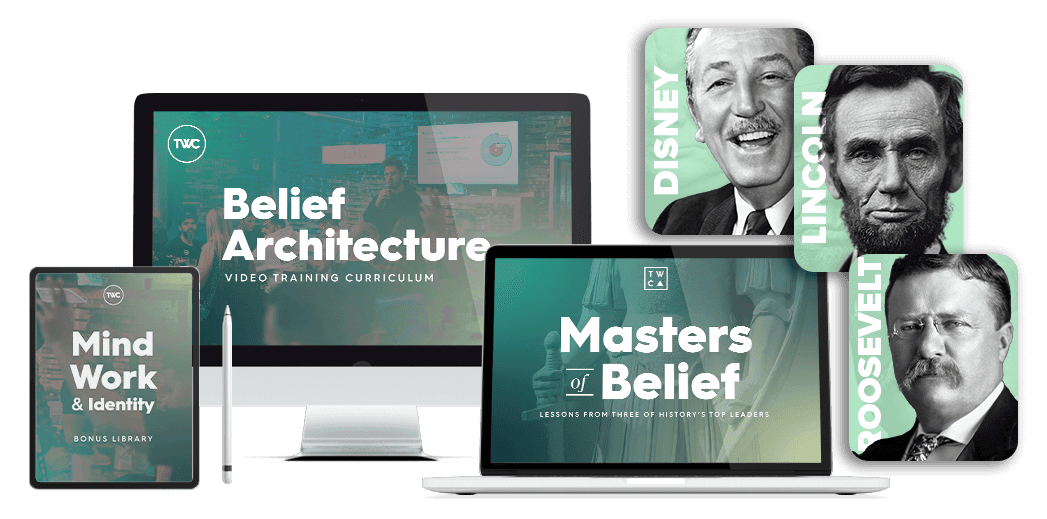Cool
Implementing Taylor Welch’s belief architecture can significantly transform personal and professional areas. Real-world examples and actionable strategies illustrate its impact and guide users towards successful application.
Case Studies
Taylor Welch’s clients, including entrepreneurs and professionals, demonstrate Belief Architecture’s effectiveness. One tech startup founder reported doubling revenue in six months by reshaping limiting beliefs. Another case involved a marketing executive who achieved a 50% increase in team productivity through mental rewiring. These successes highlight its practical benefits and inspire adoption.
Practical Tips
Incorporating Belief Architecture requires strategic introspection and proactive redesign. Start by listing limiting beliefs affecting personal or professional aspects. Employ techniques like journaling and visualisation to replace negative patterns with empowering narratives. Regular reinforcement in daily routines ensures sustainable results, revealing potential for growth in all endeavours.
Criticisms and Controversies
Taylor Welch, even though his achievements, faces criticisms and controversies centred on his “belief architecture” concept and coaching style. Critics argue that Welch’s methods may oversimplify complex psychological issues by focusing predominantly on beliefs without considering broader life contexts or possible mental health aspects. Some suggest his frameworks resemble existing cognitive behavioural techniques yet lack comprehensive evidence to support their distinct efficacy.
Concerns also arise about the commercialisation of personal development. Critics feel Welch’s services, like those in Traffic and Funnels, may prioritise profitability over personalised client needs, potentially leading to a one-size-fits-all approach. This perception is further amplified by varied client experiences, where some report significant transformations while others see limited results.
These criticisms highlight the nuanced world of self-help methodologies. They underscore the importance of rigorous evaluation and adaptability in personal development, ensuring techniques like Welch’s remain robust and tailored to individual experiences.
Conclusion
Taylor Welch’s Belief Architecture presents a compelling framework for personal and professional transformation. By strategically addressing subconscious beliefs, his method empowers individuals to break free from limiting patterns and cultivate a mindset geared towards success. The real-life applications and results experienced by clients underscore the practical benefits of this approach. While some criticisms exist, the potential for growth and change through structured introspection and belief reshaping cannot be overlooked. For those seeking to unlock their full potential, belief architecture offers a pathway to redefine mental narratives and achieve lasting success.
Frequently Asked Questions
What is “Belief Architecture” by Taylor Welch?
Belief architecture is a method developed by Taylor Welch to transform how we manage and understand beliefs. It aims to dismantle limiting beliefs and foster a success-driven mindset by identifying and rewiring subconscious patterns. This approach provides a framework for introspection, exploration, and transformation, enabling individuals to reshape their mental landscape and unlock new opportunities for personal and professional growth.
How does introspection work in belief architecture?
Introspection in belief architecture involves examining existing beliefs to identify those that limit potential. By analysing past experiences and recurring thoughts, individuals can uncover subconscious convictions restricting growth. This conscious examination is the first step in restructuring beliefs towards a success-orientated mindset.
What are the core principles of belief architecture?
The core principles include introspection, exploration, and transformation. Introspection involves examining current beliefs; exploration identifies limiting patterns; and transformation focuses on rewriting negative thoughts into positive ones. Together, these principles help reshape the mental landscape, promoting sustainable personal and professional growth.
How does Taylor Welch’s approach differ from traditional self-help?
Welch’s approach incorporates structured introspection and a strategic framework to address beliefs at their subconscious root, unlike typical self-help methods that rely mostly on motivation or surface-level positivity. It ensures sustainable change by focusing on deeper psychological structures and restructuring mental narratives.
What impacts does belief architecture have professionally?
Professionally, belief architecture aligns mental narratives with success-driven goals, enhancing productivity, innovation, and career advancement. It helps overcome self-imposed barriers and consistently reinforces positive thought patterns, creating a robust foundation for achieving long-term professional objectives.
Can you provide examples of belief architecture’s real-life applications?
Yes, the article presents case studies where a tech startup founder doubled revenue and a marketing executive boosted team productivity by 50% using belief architecture. These examples highlight its practical benefits in reshaping limiting beliefs and enhancing personal and professional outcomes.
What are some strategies to incorporate belief architecture into daily life?
Strategies for incorporating belief architecture include listing limiting beliefs, using journaling and visualisation techniques to replace them with empowering narratives, and reinforcing these new patterns regularly. These practices help maintain sustainable changes and reveal growth potential in various life areas.
What criticisms exist about Welch’s belief architecture concept?
Critics argue that Welch’s methods might oversimplify complex psychological issues by focusing primarily on beliefs, potentially neglecting broader life contexts or mental health. Concerns also include similarities to existing cognitive behavioural techniques and the commercialisation of personal development prioritising profitability.![]()





